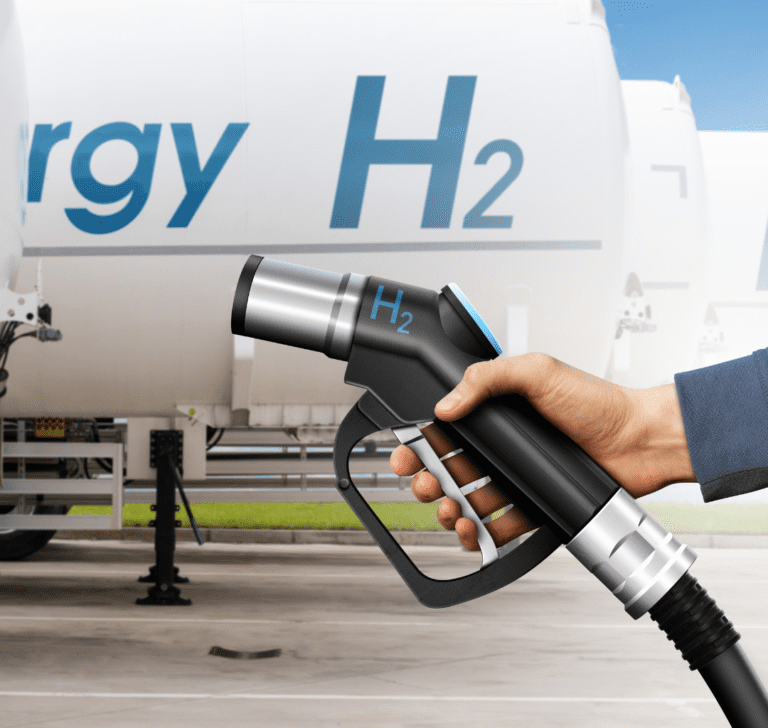A plan to guide the development of refueling and hydrogen supply infrastructures for medium and heavy vehicles
The federal agencies have launched the National Strategy for Zero-Emission Freight Corridors, aimed at guiding the development of hydrogen refueling and supply infrastructure for medium and heavy-duty vehicles until 2040, with the goal of facilitating the transition to zero-emission vehicles nationwide.
The United States is committed to decarbonizing freight transportation by adopting zero-emission medium and heavy-duty commercial vehicles and improving infrastructure, leveraging both federal and private investments. The objective is to achieve at least a 30% sales target for these vehicles by 2030 and 100% by 2040.
The strategy outlines four phases to prioritize, sequence, and accelerate infrastructure construction along major freight corridors and key transportation points. Initially, the focus is on funding zero-emission freight transport infrastructure in high-volume areas and short-distance operations, with plans to expand to long-distance operations and Class 8 vehicles over time. The phases are:
Phase 1: establishing priority axes based on freight volume, 2024-2027
During this phase, priority will be given to areas suitable for battery electric fleets, especially Class 3-7 vehicles engaged in return-to-base operations such as freight transport and deliveries. The aim is to develop transportation ecosystems within a 100-mile radius around major corridors and ports.

Phase 2: connecting stations along critical freight corridors, 2027-2030
The second phase will establish an extensive network of corridors connecting priority centers, expanding infrastructure construction beyond key states. Additionally, the introduction of the Department of Energy’s Clean Hydrogen Regional Centers is aimed at increasing the adoption of hydrogen fuel cell electric trucks by fleets.
Phase 3: expanding corridor connections by initiating network development, 2030-2035
In the third phase, priority centers will be expanded to include more ports and freight transportation facilities. The corridor network will extend nationwide, facilitating zero-emission freight transport along major east-west and north-south routes. Both battery electric and hydrogen fuel cell vehicles are expected to dominate during this phase, with infrastructure primarily supporting regional and short-distance operations.
Phase 4: achieving a national network by connecting regional corridors for ubiquitous access, 2035-2040
The final phase prioritizes the National Freight Transportation Highway System, supporting private investment to ensure widespread access to zero-emission freight transport infrastructure along corridors. Additionally, zero-emission freight transportation centers will be expanded to include truck parking areas catering to vehicles of all categories.
This strategy aims to adapt to changes in the economy, technology, market, and community needs. The Joint Office will periodically review the Strategy with inputs from the Electric Vehicles Task Force and requests for information. Additional opportunities for stakeholder engagement will be provided informally as needed.

The story of the first car race in Paris: a historic hit in 1894
Paris stands not only as a cultural and artistic epicenter but also as a pioneer in car racing In the history of automotive racing, Paris

Top states for driving in the United States in 2024
A WalletHub study compared all 50 states to determine the best driving conditions Road safety and quality are central concerns for drivers. And while the

Briefs: marijuana reclassification, vehicle fees, and climate grants
The trucking industry goes through new legislation, taxes and subsidies Questions about the proposed reclassification of marijuana The Owner-Operator Independent Drivers Association (OOIDA) supports the

Impact of traffic pollution: study reveals increase in blood pressure
A study from the University of Washington in Seattle reveals that the main cause of significant increases in blood pressure might be traffic-related gasses A

The benefits and careers of a Commercial Driver’s License
Having a CDL opens multiple doors within the trucking and transportation industry Having a Commercial Driver’s License (CDL) opens multiple doors within the trucking industry,

Sharing the road with a truck: steps to ensure your safety
Caution around blind spots and anticipating truck maneuvers are essential to ensuring everyone’s safety Truck drivers face significant challenges on the road due to their

You made some decent points there. I looked
on the net for more info about the issue
and found most people will go along with your
views on this web site.